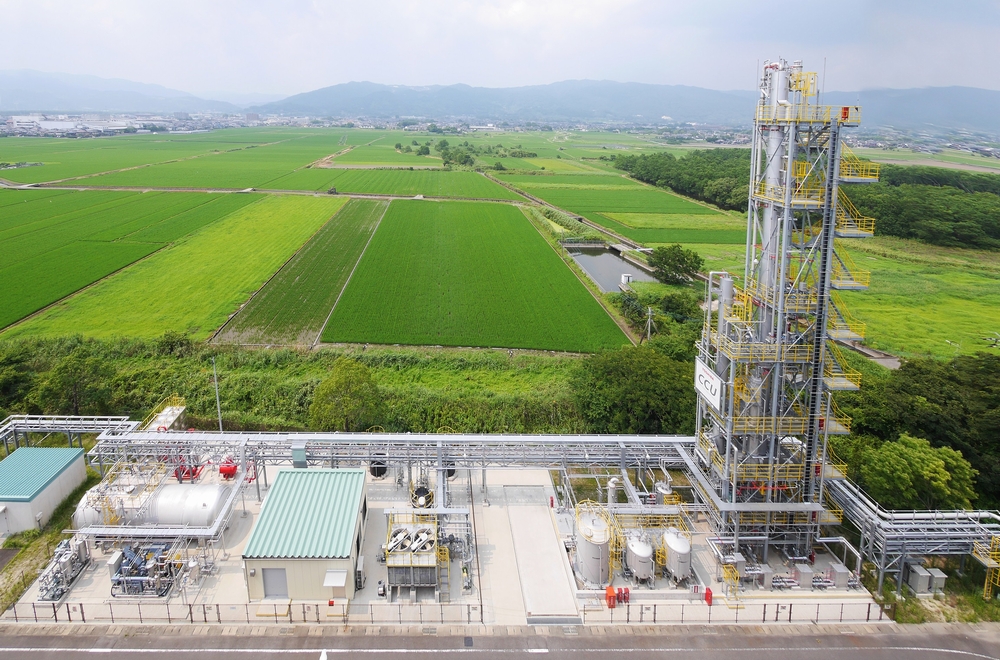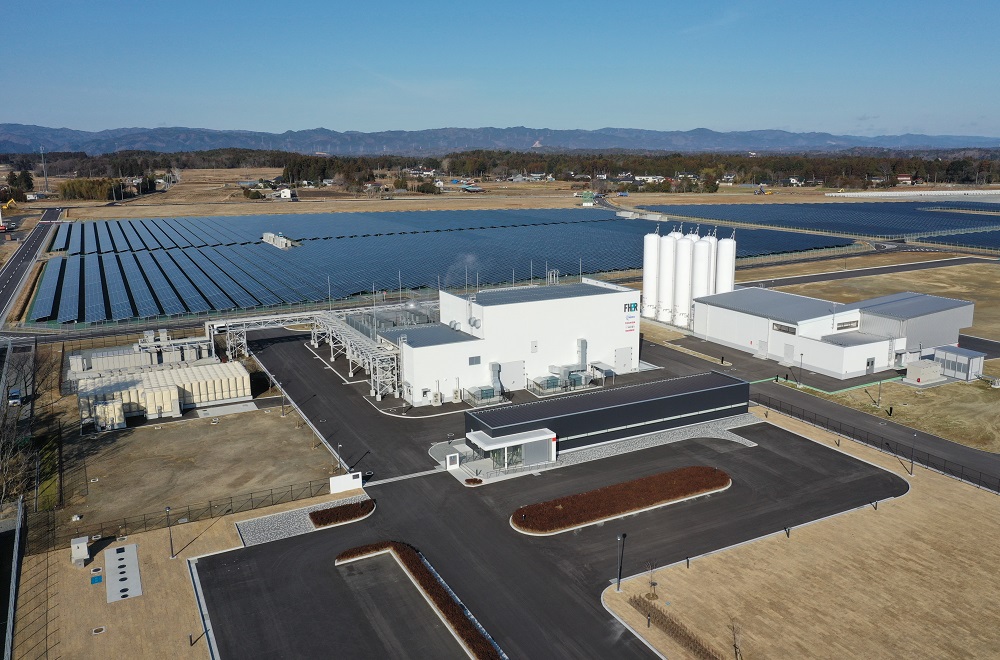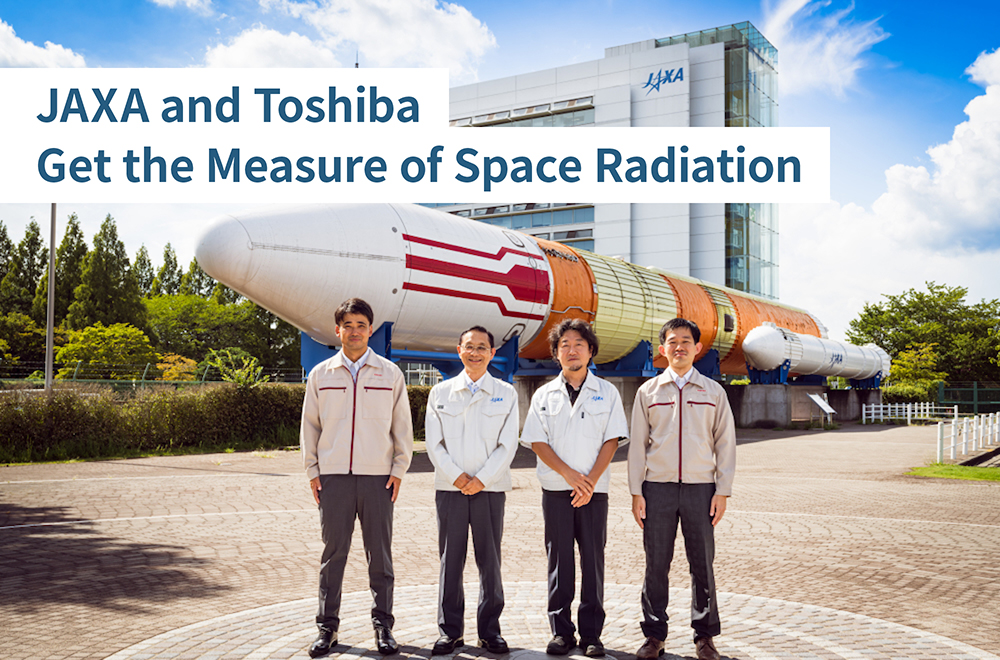From grams to tons, the world’s most effective CO₂ recycling technology: Reflects lessons learned from failure
2022/08/08 Toshiba Clip Team
- A cost-engineering perspective revolutionizes development of CO₂ recycling technology.
- Shifting emphasis from world-leading conversion efficiency to the unknown of current density.
- A Teal organization of self-motivated researchers also polishes researchers’ capabilities.
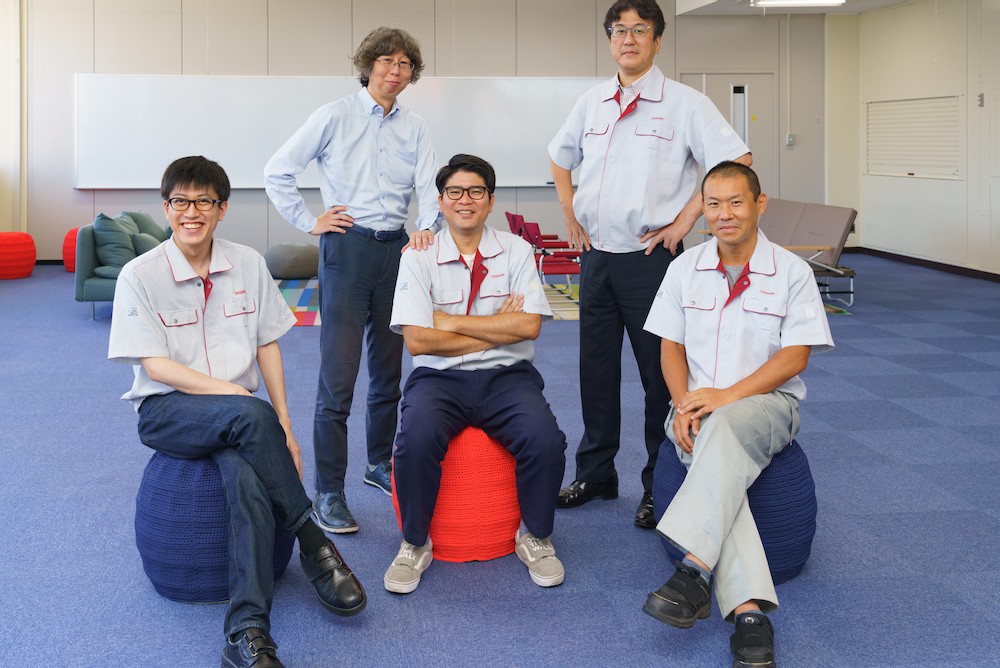
Atmospheric CO₂ levels are the highest in 2-million years. As greenhouse gases accumulate, climate change is triggering rising sea levels, heat waves and torrential rain. In response, countries worldwide have announced measures to promote carbon neutrality, and reduce greenhouse gas emissions to substantially zero by 2050.
Toshiba is contributing to decarbonization. The company has developed a power to chemicals (P2C) process that uses surplus renewable energy to decompose CO₂ to carbon monoxide (CO), for use by industry. Details of the technology, and how it achieved the world’s highest CO₂ throughput, are covered HERE. In this article the focus is on the researchers who led the development: their thinking and goals, and how their capabilities came to the fore as they shaped their working environment and research direction. Their committed efforts were also bolstered by lessons learned by the project leader in the failure of an earlier project. The team’s innovations are gathering pace, a reboot away the leader’s past embarrassment and frustrations, and moving toward real-world implementation.
From conversion efficiency to current density; a major shift aiming for practical results
The work on P2C is being done at the Transducer Technology Laboratory, part of Toshiba’s Corporate Research & Development Center. A transducer is a converter, and as project leader Koji Mizuguchi explains, “We convert real-world things, like sunlight and CO₂, into things with value. We develop the equipment needed to do that, and create value that contributes to the world. That’s the lab’s mission.”
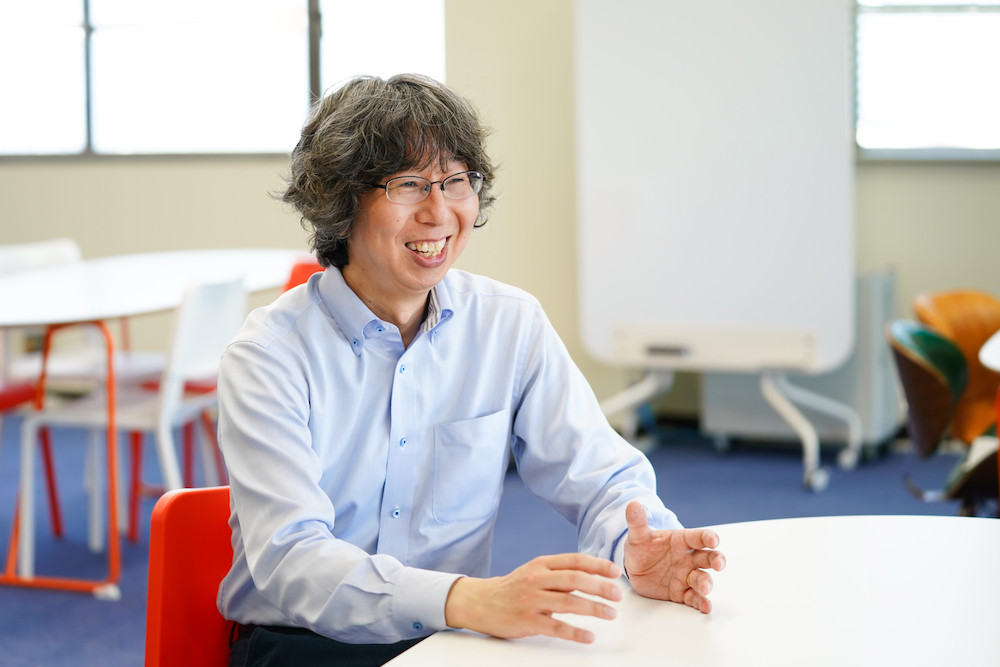
Koji Mizuguchi Senior Manager, Transducer Technology Laboratory, Nano Materials and Frontier Research Laboratories, Corporate Research & Development Center, Toshiba Corporation
When Mizuguchi and his team started to research the transformation of CO₂ into valuable raw material in industrial chemistry, their first choice was artificial photosynthesis—so named because it is patterned after plant photosynthesis and driven by sunlight. At that time, their chosen metric was conversion efficiency, and their R&D recorded world-leading figures. But Mizuguchi decided to review the idea of conversion efficiency from the ground up.
“We found that even if you did increase conversation efficiency, annual throughput of CO₂ was at the level of thousands of grams. That’s completely unrealistic for facilities like waste incineration plants and thermal power plants, which emit CO₂ by the ton. Competition to improve CO₂ conversion efficiency using artificial photosynthesis was overheating, but only in labs. I’m not even sure it was intended for real-world application. But our lab’s mission is conversion to create value, and I realized that unless we changed our perspective we wouldn’t create value for the world.
The team shifted its focus to electrolysis of CO₂ and the metric of current density. Their read was that by pushing current density to the extreme, tons of CO₂ could be processed. They also had a hunch that the floor area of the equipment would be about 20% that of current electrolysis equipment, making introduction in factories and power plants a more realistic proposition. From grams to tons—while leading the conversion efficiency race, the team changed direction for a new metric, current density. Mizuguchi says that the context for this was his own experience of failure.
“I joined Toshiba as a nuclear researcher,” says Mizuguchi, “and I was assigned to a project to extract uranium and rare metals in Kazakhstan. Beaker-scale experiments at the research stage went well, but ultimately, after five-years in the field, nothing came of it. When I look back, I still feel frustrated by this failure, and I am sure that it wouldn’t have happened if, at the experimental stage, I had considered elements required for real-world implementation.
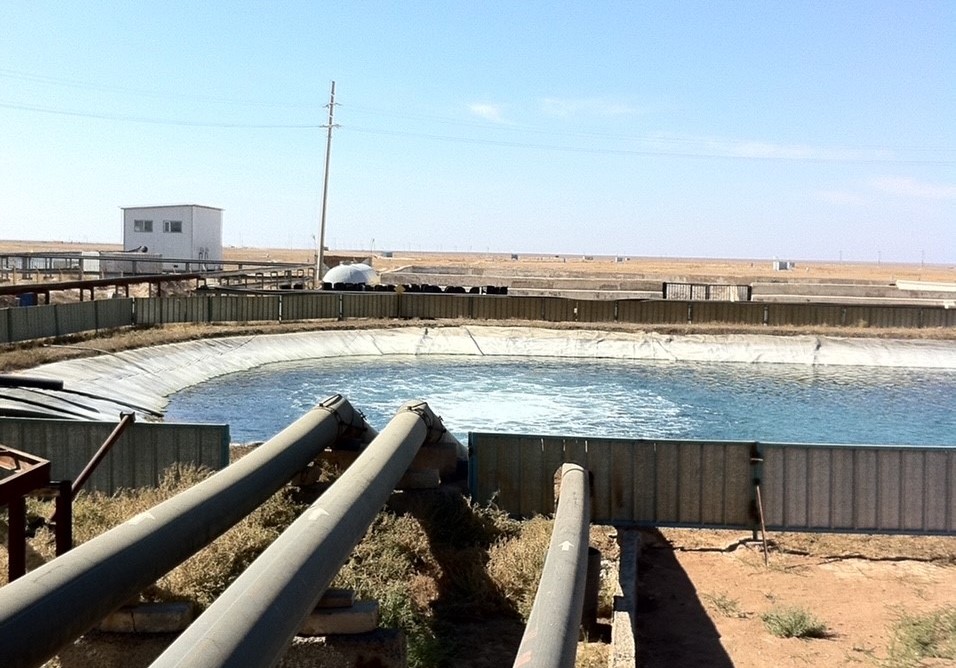
Project site in Kazakhstan where Mr. Mizuguchi was involved
Mizuguchi went on to study cost engineering by applying cost management and business planning techniques to a virtual plant constructed from experimental data. After being assigned to the Corporate Research & Development Center, he brought this approach to P2C of CO₂. He weighed the conversion efficiency of the artificial photosynthesis project against the potential of achieving high current density in electrolysis. The result persuaded him that a shift toward current density was needed to accelerate the P2C project.
Any concerns Mizuguchi felt about acceptance of this change of direction proved groundless. The team immediately started work on preliminary calculations of the shift to high current density, using experimental data to estimate costs against budget, and anticipated returns from commercialization. By qualitatively incorporating the insights of Kitagawa and other researchers, the team came up with a proposal to the business unit that was more than empty theory. In fact, the researchers’ adoption of cost engineering marked the start of a shift toward cooperation with the business division. Kitagawa recalls it well. “I had a feeling that there would be a good fit between Toshiba’s technological assets and the expertise of the team, and that things would take shape.”
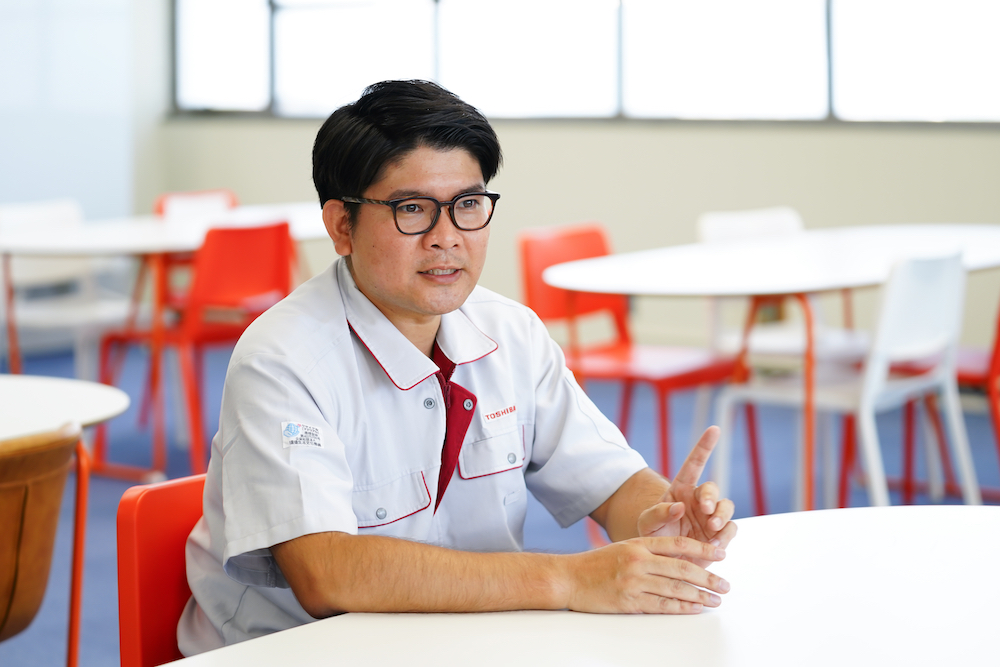
Ryota Kitagawa, Expert, Transducer Technology Laboratory, Nano Materials and Frontier Research Laboratories, Corporate Research & Development Center, Toshiba Corporation
In addition to the Corporate Research & Development Center, both Mizuguchi and Kitagawa have concurrent assignments at Toshiba Energy Systems & Solutions Corporation, which offer them plenty of opportunities for discussions with the business unit. As moves to bring P2C to fruition continue, Mizuguchi recalls how those discussions started.
“Hiroyuki Ota, who at that time headed Toshiba Energy Systems & Solutions’ carbon recycling business, said to me, ‘If the Research & Development Center is really serious about this, get involved in our business studies.’ Well of course, we were serious, and we now take part in regular meeting, contributing from the technology perspective. This approach also grew out of my experience.
“Working on the nuclear energy project made me really aware of how coordination between the lab and business unit impacts on progress. Bringing a product into the world won’t work if, at the end of the development work, you say, “Here it is, commercialize it.” It’s also a real pleasure for researcher to be involved in the realization of a final design, and I want our team members to have that experience.”
Has the lab’s approach resulted in an emerging technology that can change the world?
Despite the pivot to current density, team morale remained high. As reported in the previous article, the team met its goals of higher density, larger area and stacking with a high current electrode for a larger electrolytic cell with greater CO₂ throughput, and a design that boosted areal density through stacking. An annual processing rate of 900 grams/m2 was pushed to a potential for 30 to 40 tons/m2.
With his sights set on securing more advances, Mizuguchi says that “Teal organization” is the lab’s guiding principle. It’s an organizational approach far from a top-down system, one where individuals act autonomously to advance projects, and that is attuned to responding to our age of “VUCA,” where volatility, uncertainty, complexity and ambiguity add up to a murky future that is difficult to predict.
“We no longer live in age of limited choices and mass production by hierarchical organizations,” Mizuguchi explains. “Predicting things is more difficult, and we have to be self-motivating. Our team is proactive and grabs opportunities, and we’ve experienced a lot of success. The breakthrough idea of applying a high density current came from a young engineer who joined the company just a few years ago. This is all due to the team’s strong motivation to carry out research.
“The question is, how do we maintain that lofty ambitiousness? When setting research target in the lab, we encourage each other to self-questioning the target by asking, ‘Can this change the world?’ Because our lab brings together people who are on fire with an enthusiasm for innovation, such as ‘make the world a better place by achieving P2C’ and such attitude emerges ideas for technologies our society needs.”
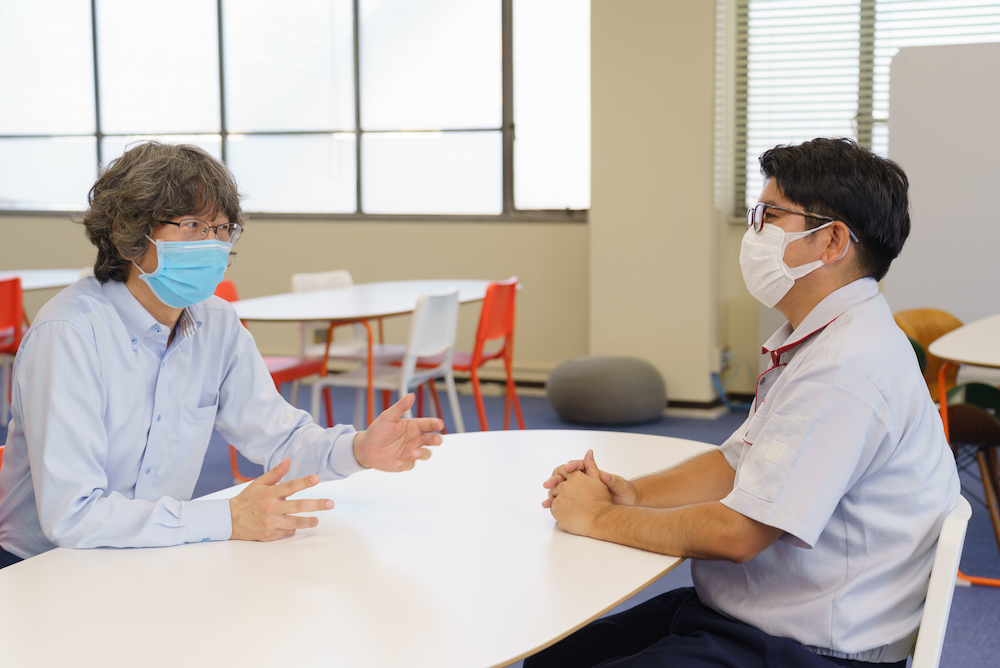
Kitagawa offers his own enthusiastic comments: “Studying cost engineering with Mizuguchi broadened my perspective as a researcher. It also introduced me agile development methods that speed up the achievement of results. We are now determining how much value that products based on our research will bring to society through verification testing that looks in fine detail at each step.
“I started my career researching materials, but I can’t get an overview of things like cost and the system if I focus only on material performance. By asking where the materials function in the system, I became able to look at the whole, and to understand where cost compromises have to be made.”
P2C has built a presence, and is seen as a project that contributes to society and to resolving environmental issues. It has been recognized with awards from academic societies, and with the 2020 with the Ministry of the Environment’s Award for Climate Action. These are outcome of the lab’s convictions, and of a project team greater than the sum of its parts.
Building a new business model for a carbon-recycling economy
The P2C business model is driven by the fact that CO from CO₂ conversion can be combined with hydrogen (H2) to make syngas, synthetic gas. This is a crucial intermediate in the production of many chemical products, including methanol and jet fuel.
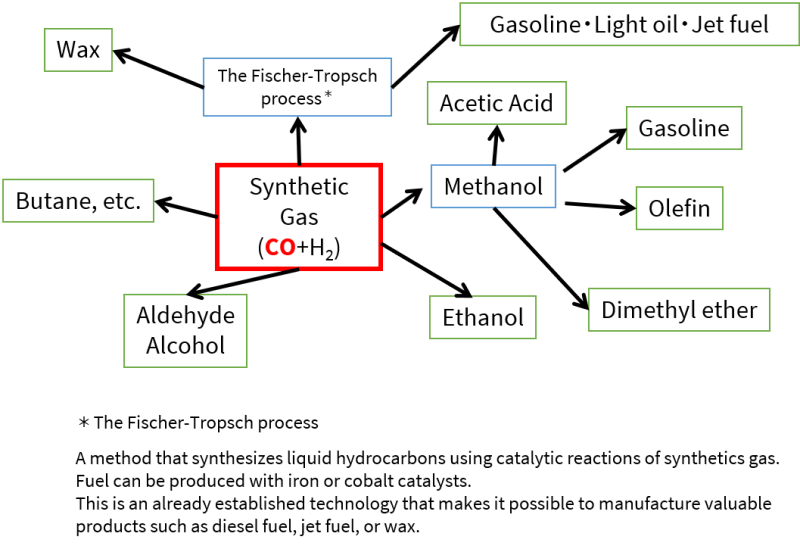
CO+H₂ opens the way to manufacturing all kinds of chemical products
Commenting on its potential, Mizuguchi says, “CO₂ goes in, but a wide range of chemical products come out, which means we can work with diverse clients and business partners. We’re now developing catalysts for each product and doing other technical investigations. We picture modular equipment that can produce methanol and other products simply by connecting standardized piping, and we aim to treat 100 tons of CO₂ a day, which will lead to a sustainable business and a sustainable society.
Sustainable aviation fuel is one area the team is currently working on. In December 2020, six companies—Toshiba Energy Systems & Solutions, Toyo Engineering, Toshiba, Idemitsu Kosan, Japan CCS, and All Nippon Airways—announced cooperation on business models built around P2C. The following year the initiative was selected for support by Japan’s Ministry of the Environment under its “Project to Promote the Creation of Circular Carbon Society Model through CO₂ Recycling.”
A group of self-motivated researchers at Toshiba is working closely with the business unit and getting other companies involved, all to advance the commercialization of P2C. When diverse knowhow combines with strong resolution, new value is created—can this change the world?
Note: Departments and titles are as at the time of interviews.
![]()
Related Links
*This section contains links to websites operated by companies and organizations other than Toshiba Corporation.
Toshiba’s Carbon Recycling Technology Realizes World’s Highest CO2 Conversion Speed and Achieves Decarbonization in a Limited Space -CO2 electrocatalyst electrode stack technology can convert up to 1.0 ton of CO2 a year at ambient temperatures, with an installation space the size of an envelope- | Corporate Laboratory | Toshiba
Adopted for the Ministry of the Environment "FY2021 Project to Promote the Creation of Circular Carbon Society Model through CO₂ Recycling" | News Release | Toshiba Energy Systems & Solutions





